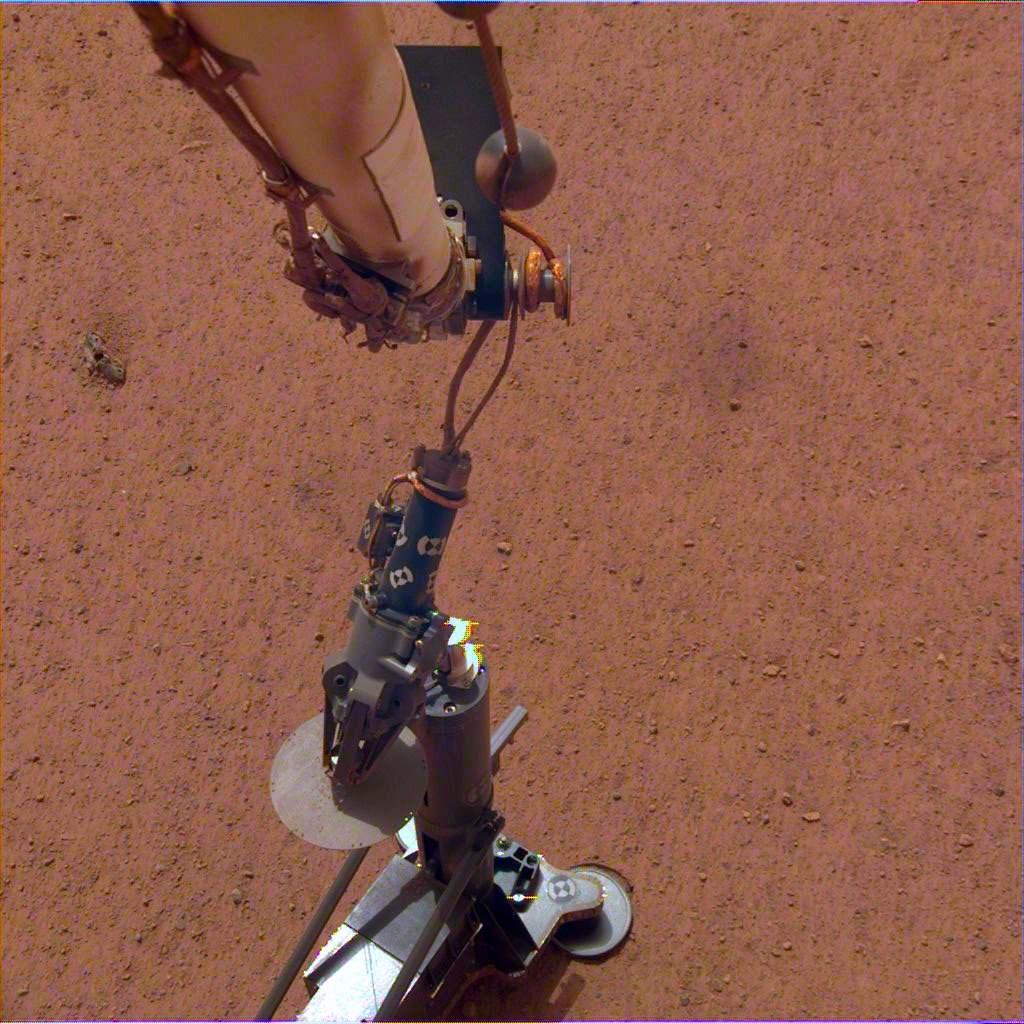First 'Mole' on Mars Hits Rocky Snag Beneath the Red Planet's Surface

The first Martian "mole" encountered some obstacle underground as the NASA InSight lander dug below the surface, NASA reported.
The InSight Mars lander, which touched down on Mars in November, deployed a probe as part of its Heat and Physical Properties Package (also called HP3). The probe, or "mole," is designed to burrow underground and measure heat coming from inside Mars, information that will help scientists better understand the planet's structure and formation.
But the 16-inch (40 centimeters) probe made it only three-quarters of the way out of its housing structure on Feb. 28 before stopping short. A second attempt, on Saturday (March 2), yielded little progress. In a statement, NASA officials said the data received so far suggests that the mole is at a 15-degree tilt and has hit some rock or gravel. While the instrument is designed to get around rocky obstacles, the German instrument team plans to stop the procedure for further investigation.
"The team has decided to pause the hammering for now to allow the situation to be analyzed more closely and jointly come up with strategies for overcoming the obstacle," Tilman Spohn, HP3 principal investigator at the German Aerospace Center (DLR), said in a blog post. This pause will last for about two weeks, he added.
While the probe isn't moving right now, it's otherwise working as it is supposed to. Once everything is set, the probe will release pulses of heat of 50 degrees Fahrenheit (28 degrees Celsius) to measure how quickly the heat dissipates under the surface.
"This property, known as thermal conductivity, helps calibrate sensors embedded in a tether trailing from the back of the mole," NASA officials said. "Once the mole is deep enough, these tether sensors can measure Mars' natural heat coming from inside the planet, which is generated by radioactive materials decaying and energy left over from Mars' formation."
For now, the team will do more heating tests with their mole to see how the upper surface of Mars conducts heat. The team will also measure temperature changes using a radiometer on the deck of InSight. This week provides an interesting opportunity to do so, as InSight will experience mini-eclipses when one of the Martian moons, Phobos, moves in front of the sun. When Phobos partially blocks the sun, it will cool the terrain surrounding InSight.
Breaking space news, the latest updates on rocket launches, skywatching events and more!
- NASA's InSight Mars Lander: Amazing Landing Day Photos!
- Soar Over NASA's InSight Landing Site on Mars in This Stunning Video
- 'Mole' on InSight Mars Lander Starts Burrowing, But the Going Is Rough
Follow Elizabeth Howell on Twitter @howellspace. Follow us on Twitter @Spacedotcom and on Facebook.

Elizabeth Howell (she/her), Ph.D., was a staff writer in the spaceflight channel between 2022 and 2024 specializing in Canadian space news. She was contributing writer for Space.com for 10 years from 2012 to 2024. Elizabeth's reporting includes multiple exclusives with the White House, leading world coverage about a lost-and-found space tomato on the International Space Station, witnessing five human spaceflight launches on two continents, flying parabolic, working inside a spacesuit, and participating in a simulated Mars mission. Her latest book, "Why Am I Taller?" (ECW Press, 2022) is co-written with astronaut Dave Williams.
